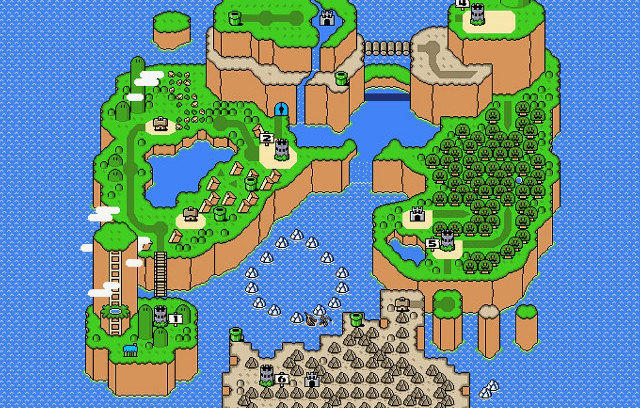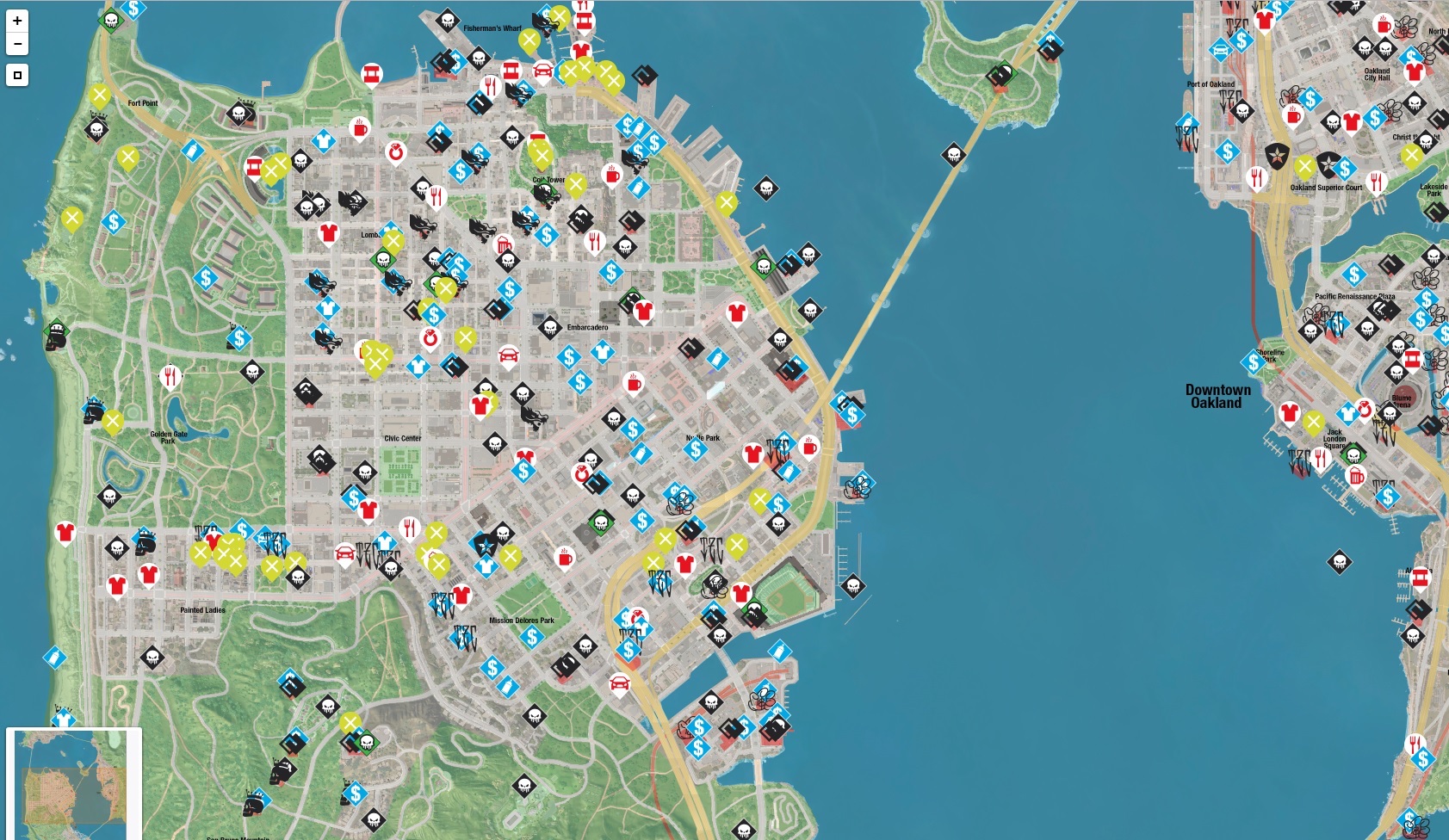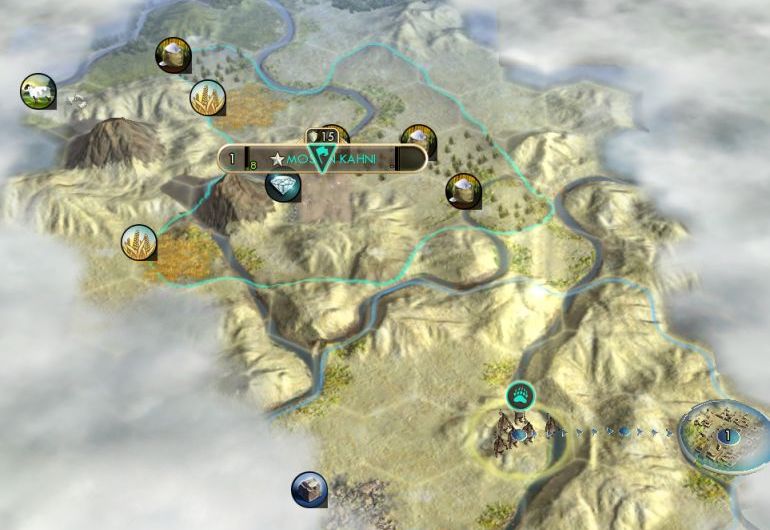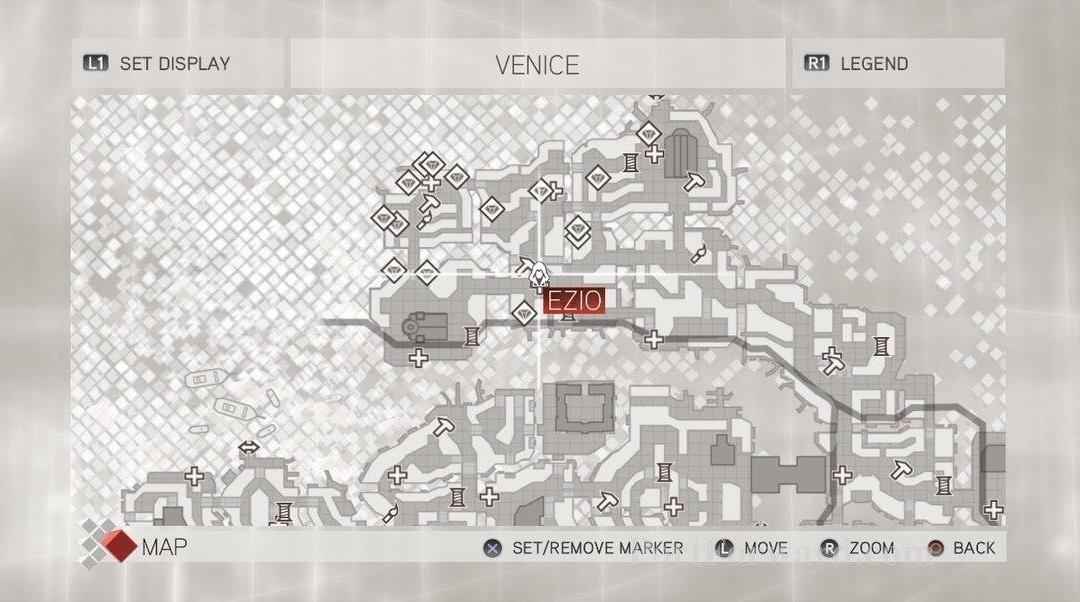755 Defining Video Game Map Types
by Foster Douglas on January 25, 2017
Maps in video games are deeply interesting. In general, it’s rare that a map actually functions in a coherent way. That is, in a way that makes sense for anything to function. They live by their own rules, somewhat.
There are plenty of different types of maps, but generally they seem to fall into a few categories: a map that “reveals” itself as you explore parts of it, a detailed map that is entirely revealed for you from the start, some version of either of those but extremely simplified or obfuscated, or some version of any of these while emulating modern map technology. For now, I want to give some examples of each and describe them briefly. In a future post, I’ll talk specifically about the concept of information offloading, and how it relates to the “revealing itself” style map. Here we go:

Super Mario World (SNES, 1991)
Likely one of the most recognized video game maps (yes, or Legend of Zelda), this is a good example of what I would say most video games do. A simplified view of the game’s world, often called a “world map,” that allows the player to move through the game.

The Elder Scrolls V: Skyrim – Special Edition (PC / PS4 / XBOX1, 2016)
An example of a map that takes cues from modern mapping applications, Skyrim’s map is a relatively sparsely populated but realistic view of the world. Icons are added to the map as the player visits new landmarks and areas. It is an element that is somewhat “out of canon” in my opinion, since the player’s character in the game doesn’t have access to this; essentially, a way for the player to keep track of information and places in the game.

Castlevania: Symphony of the Night (PS1, 1997)
Another well-known map (both right-side-up and upside-down), the map in SOTN reveals itself as the player explores each room of the game. Limited other information is added to the map, areas for the player to “save” and “teleport” are marked in red and orange. In my opinion, one of the best ways to balance giving players information while still requiring them to rely on their memory to play.

Mark of the Ninja (PC / Mac, 2013)
Similar to the previous map, but in this case, the map will often give the player a hint as to where certain objectives or locations are generally, without necessarily fully spoiling how the player will actually reach them. It could be called a derivative of “fog of war,” although that’s typically a term reserved for multiplayer competitive games.

Watch Dogs 2 (PC / PS4 / XBOX1, 2016)
In game series’ like Watch Dogs or Grand Theft Auto, often most or all information the player needs can be enabled on the game map. It closely mimics a modern map, with pin points and searchable landmarks, and even sometimes “GPS-based” directions from current position to intended destination.

Civilization V (PC / Mac, 2010)
Although I’m not an expert on the Civilization series, it is an example of a “Fog of War” map style. However, since the gameplay of strategy games like this happens directly on the map itself, and therefore the map’s is a large portion of the actual game design itself, these examples aren’t entirely relevant to the discussion here. Included mostly for completeness.

Dishonored 2 (PC / PS4 / XBOX1, 2016)
The maps in the Dishonored series are only available to look at when found on the walls of the buildings and locations they are mapping. In general, especially for a building like this that would actually probably have and need a map, I think this is a great way to keep the player engaged in the design of the space while giving them simple hints as to where they could go.

Assassin’s Creed II (PC / PS3 / XBOX360, 2009)
No map discussion is complete without talking about Ubisoft. They are well-known for having mechanics in many of their games that reveal large sections of the games’ maps after “unlocking” or “securing” some pivotal point on the map. Above you can see it shows a very subtle view at what the map will look like, covered by small squares of differently tints of grey. This helps the player understand that there is more to the game to find, if only they could unlock it to see.
We will discuss more how studying these different types can contribute to progressing map design in gaming.
[ Today I Was Playing: nothing… ]
#game-mechanic-system, #game-opinion